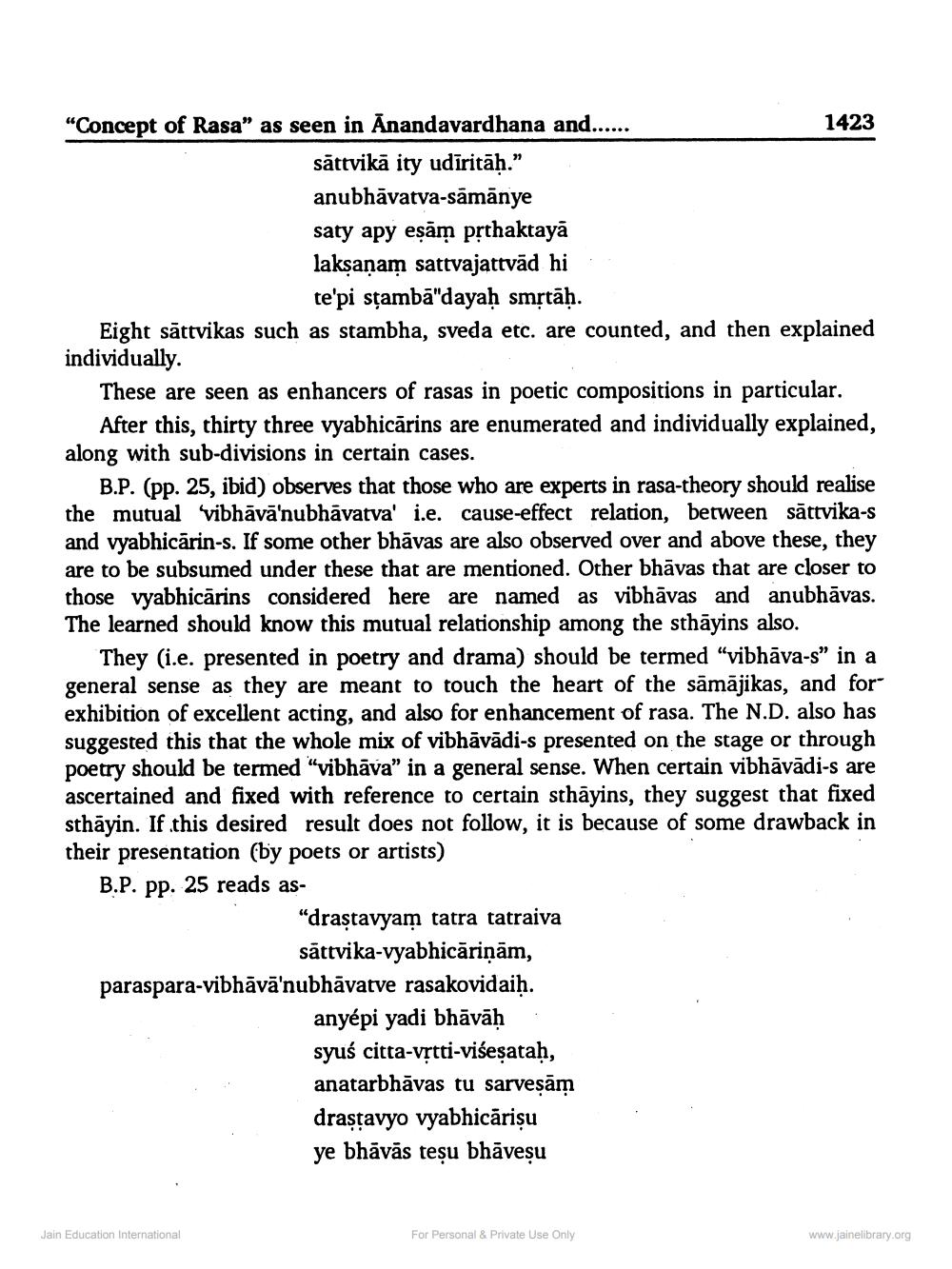________________
"Concept of Rasa" as seen in Anandavardhana and......
1423 sāttvikā ity udīritāḥ." anubhāvatva-sāmānye saty apy eșām prthaktayā lakṣaṇam sattvajattvād hi
te'pi stambā"dayaḥ smrtāḥ. Eight sāttvikas such as stambha, sveda etc. are counted, and then explained individually.
These are seen as enhancers of rasas in poetic compositions in particular.
After this, thirty three vyabhicārins are enumerated and individually explained, along with sub-divisions in certain cases.
B.P. (pp. 25, ibid) observes that those who are experts in rasa-theory should realise the mutual vibhāvā'nubhāvatva' i.e. cause-effect relation, between sāttvika-s and vyabhicărin-s. If some other bhāvas are also observed over and above these, they are to be subsumed under these that are mentioned. Other bhāvas that are closer to those vyabhicărins considered here are named as vibhāvas and anubhāvas. The learned should know this mutual relationship among the sthāyins also.
They (i.e. presented in poetry and drama) should be termed “vibhāva-s” in a general sense as they are meant to touch the heart of the sāmājikas, and for exhibition of excellent acting, and also for enhancement of rasa. The N.D. also has suggested this that the whole mix of vibhāvādi-s presented on the stage or through
hould be termed "vibhāva" in a general sense. When certain vibhāvādi-s are ascertained and fixed with reference to certain sthāyins, they suggest that fixed sthāyin. If this desired result does not follow, it is because of some drawback in their presentation (by poets or artists) B.P. pp. 25 reads as
"drastavyam tatra tatraiva
sättvika-vyabhicāriņām, paraspara-vibhāvā'nubhāvatve rasakovidaih.
anyépi yadi bhāvāḥ syuś citta-vrtti-višesataḥ, anatarbhāvas tu sarvesām drastavyo vyabhicărișu ye bhāvās teșu bhāveşu
Jain Education International
For Personal & Private Use Only
www.jainelibrary.org




